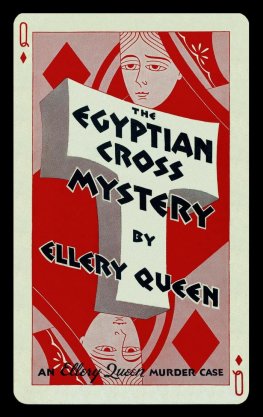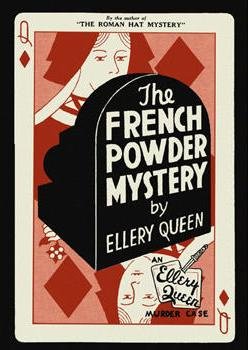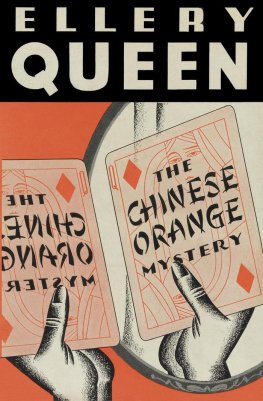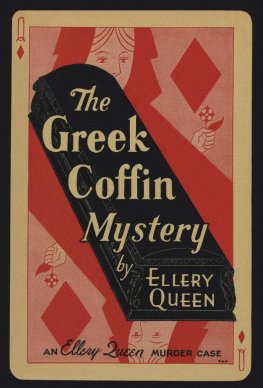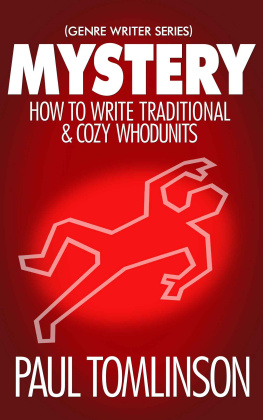The Roman Hat Mystery
Ellery Queen
Grateful acknowledgment
is made to
PROFESSOR ALEXANDER GOETTLER
Chief Toxicologist of the City of New York
for his friendly offices
in the preparation of this tale
Lexicon of Persons Connected with the Investigation
Note: The complete list of individuals, male and female, brought into the story of Monte Fields murder and appended below is given solely for the convenience of the reader. It is intended to simplify rather than mystify. In the course of perusing mysterio-detective literature the reader is, like as not, apt to lose sight of a number of seemingly unimportant characters who eventually prove of primary significance in the solution of the crime. The writer therefore urges a frequent study of this chart during the readers pilgrimage through the tale, if toward no other end than to ward off the inevitable cry of Unfair! the consolation of those who read and do not reason.
Ellery Queen
Monte Field, an important personage indeed the victim.
William Pusak, clerk. Cranially a brachycephalic.
Doyle, a gendarme with brains.
Louis Panzer, a Broadway theatre manager.
James Peale, the Don Juan of Gunplay.
Eve Ellis. The quality of friendship is not strained.
Stephen Barry. One can understand the perturbation of the juvenile lead.
Lucille Horton, the lady of the streets in the play.
Hilda Orange, a celebrated English character actress.
Thomas Velie, Detective-Sergeant who knows a thing or two about crime.
Hesse, Piggoff, Flint, Johnson, Hagsfrom, Ritter, gentlemen of the Homicide Squad.
Dr. Samuel Prouty, Assistant to the Chief Medical Examiner.
Madge OConnell, usherette on the fatal aisle.
Dr. Stuttgard. There is always a doctor in the audience.
Jess Lynch, the obliging orangeade boy.
John Cazzanelli, alias Parson Johnny, naturally takes a professional interest in Gunplay.
Benjamin Morgan. What do you make of him?
Frances Ives-Pope. Enter the society interest.
Stanford Ives-Pope, man-about-town.
Harry Neilson. He revels in the sweet uses of publicity.
Henry Sampson, for once an intelligent District Attorney.
Charles Michaels, the fly or the spider?
Mrs. Angela Russo, a lady of reputation.
Timothy Cronin, a legal ferret.
Arthur Stoates, another.
Oscar lewin, the Charon of the dead mans office.
Franklin Ives-Pope. If wealth meant happiness.
Mrs. Franklin Ives-Pope, a maternal hypochondriac.
Mrs. Phillips. Middle-aged angels have their uses.
Dr. Thaddeus Jones, toxicologist of the City of New York.
Edmund Crewe, architectural expert attached to the Detective Bureau.
Djuna, an Admirable Crichton of a new species.
The Problem Is
Who Killed Monte Field?Meet the astute gentlemen whose business
it is to discover such things
Mr. Richard Queen
Mr. Ellery Queen
Explanation for the Map of the Roman Theatre

A: Actors dressing-rooms.
B: Frances Ives-Popes seat.
C: Benjamin Morgans seat.
D: Aisle seats occupied by Parson Johnny Cazzanelli and Madge OConnell.
E: Dr. Stuttgards seat.
F, F: Orangeade boys stands (only during intermissions).
G: Area in vicinity of crime. Black square represents seat occupied by Monte Field. Three white squares to the right and four white squares directly in front represent vacant seats.
H: Publicity office, occupied by Harry Neilson.
I: Manager Louis Panzers private office.
J: Anteroom to managers office.
K: Ticket-takers box.
L: Only stairway leading to the balcony.
M: Stairway leading downstairs to General Lounge.
N, N: Cashiers offices.
O: Property Room.
P: William Pusaks seat.
Q, Q: Orchestra boxes.
I have been asked by both publisher and author to write a cursory preface to the story of Monte Fields murder. Let me say at once that I am neither a writer nor a criminologist. To make authoritative remarks, therefore, anent the techniques of crime and crime fiction is obviously beyond my capacity. Nevertheless, I have one legitimate claim to the privilege of introducing this remarkable story, based as it is upon perhaps the most mystifying crime of the past decade... If it were not for me, The Roman Hat Mystery would never have reached the fiction-reading public. I am responsible for its having been brought to light; and there my pallid connection with it ends.
During the past winter I shook off the dust of New York and went a-traveling in Europe. In the course of a capricious roving about the corners of the Continent (a roving induced by that boredom which comes to every Conrad in quest of his youth) I found myself one August day in a tiny Italian mountain village. How I got there, its location and its name do not matter; a promise is a promise, even when it is made by a stockbroker. Dimly I remembered that this toy hamlet perched on the lip of a sierra harbored two old friends whom I had not seen for two years. They had come from the seething sidewalks of New York to bask in the brilliant peace of an Italian countryside well, perhaps it was as much curiosity about their regrets as anything else, that prompted me to intrude upon their solitude.
My reception at the hands of old Richard Queen, keener and grayer than ever, and of his son Ellery was cordial enough. We had been more than friends in the old days; perhaps, too, the vinous air of Italy was too heady a cure for their dust-choked Manhattan memories. In any case, they seemed profoundly glad to see me. Mrs. Ellery Queen Ellery was now the husband of a glorious creature and the startled father of an infant who resembled his grandfather to an extraordinary degree was as gracious as the name she bore. Even Djuna, no longer the scapegrace I had known, greeted me with every sign of nostalgia.
Despite Ellerys desperate efforts to make me forget New York and appreciate the lofty beauties of his local scenery, I had not been in their tiny villa for many days before a devilish notion took possession of me and I began to pester poor Ellery to death. I have something of a reputation for persistence, if no other virtue; so that before I left, Ellery in despair agreed to compromise. He took me into his library, locked the door and attacked an old steel filing cabinet. After a slow search he managed to bring out what I suspect was under his fingers all the time. It was a faded manuscript bound Ellery-like in blue legal paper.

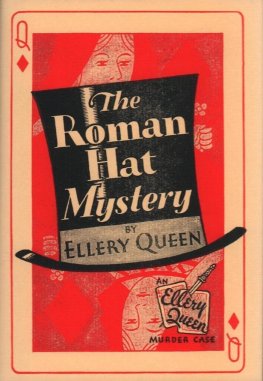
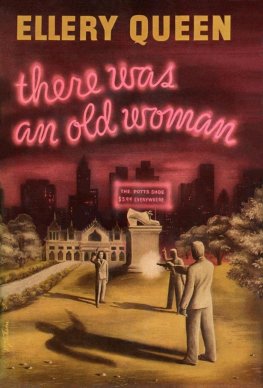
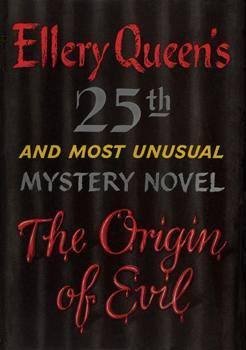
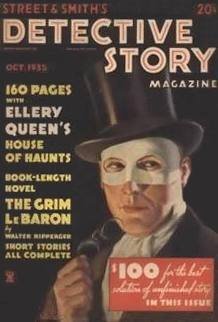
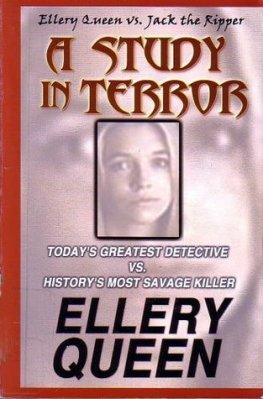

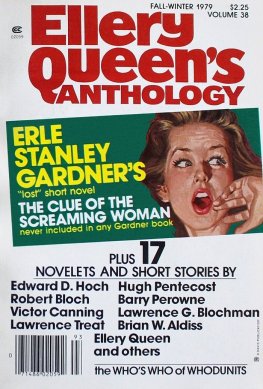
![Elleri Kuin - The Dragon’s Teeth [= The Virgin Heiresses]](/uploads/posts/book/924278/thumbs/elleri-kuin-the-dragon-s-teeth-the-virgin.jpg)
